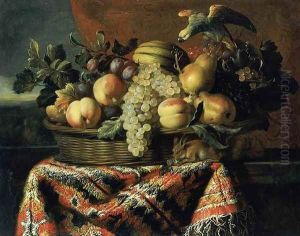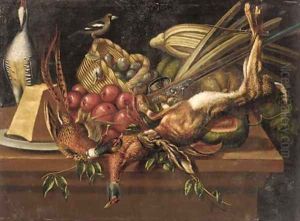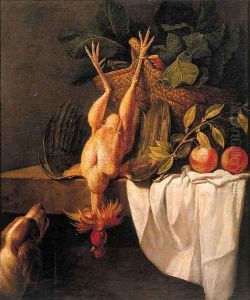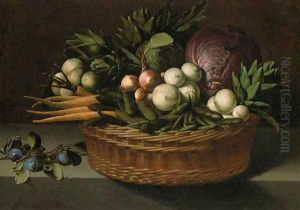Pierre van BOUCLE (BOECKEL) Paintings
Pierre van Boucle, also known as Pierre van Boeckel, was a Flemish painter and draughtsman known for his still lifes and genre scenes. Born in Antwerp in 1610, he was part of the large group of artists active in the city during the 17th century, a period often referred to as the Flemish Golden Age. Van Boucle's work is characterized by its meticulous attention to detail and its rich, vibrant colors.
Little is known about van Boucle's early life and training. It is presumed that he entered the Antwerp Guild of Saint Luke, the city's association of painters, engravers, and other artists, but records of his exact activities during his early years are scarce. He likely apprenticed under a master in Antwerp, as was customary at the time, and his style suggests that he was influenced by other Flemish painters such as Frans Snyders and Jan Fyt, who were renowned for their depictions of animals and still life compositions.
Van Boucle's paintings often depicted hunt scenes, banquets, and kitchen still lifes, featuring an array of objects such as game, fruits, and kitchenware, arranged in a manner that showcased his skill in rendering textures and surfaces. He had a particular talent for painting different materials such as metal, glass, and textiles, as well as the natural textures of food items and animals. His works are notable for their compositional balance and the subtle interplay of light and shadow.
Despite his evident skill, van Boucle did not achieve the same level of fame as some of his contemporaries. However, his works were appreciated for their quality and craftsmanship, and he enjoyed a certain degree of local success. His paintings can be considered a reflection of the wealth and opulence of the Flemish bourgeoisie, who were his primary patrons.
Pierre van Boucle died in 1673. While he may not be as well-known as other artists from his time, his work provides a valuable insight into the still life and genre painting traditions of the Flemish Golden Age. Today, his paintings can be found in various art collections and museums, where they continue to be studied and admired for their technical excellence and aesthetic appeal.



